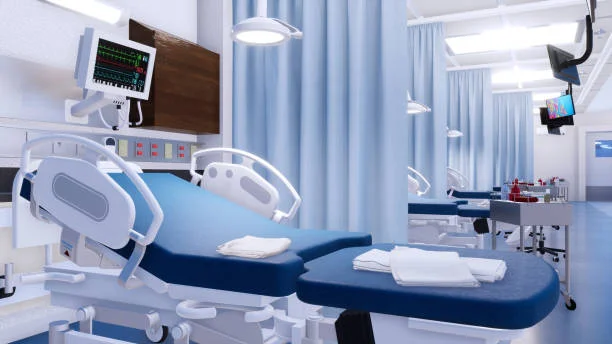Hospitals can struggle at times with space, particularly when there is an influx of patients being admitted. This can impact how hospital wards or Hospital Ward operate, requiring more time to navigate the space and complete tasks while checking in on patients. For staff, it can be a frustrating experience. For patients, it can result in poor care.
But there are changes that can be made to optimize and organize hospital wards. In this post, three key improvements to maximize your ward have been explained.
Add Shelving and Storage
With hospital wards being busy the majority of the time, it can be tough to keep the space neat and tidy. Thankfully, there are ways to do this, and one of the best methods is adding shelves and storage to the ward. It is best to choose properly designed storage solutions for medical spaces, like stationary cabinets and mobile carts available from InnerSpace Medical.
Storage solutions like these can reduce the amount of clutter in the ward, which creates a more functional environment. This is vital in busy hospital wards that depend on organization, especially when some units can be moved easily. The right storage and additional shelving can even be designed to maximize the ward’s vertical space, allowing staff to store more items in the same footprint.
Not only will this optimize the ward, but it can improve the workflow, too. Designated areas for medical supplies, medications, and equipment will allow staff to quickly locate and retrieve the correct items. This will reduce wasted time and enhance the hospital ward’s efficiency.
Take a deeper dive—this piece uncovers more angles.
Streamline Accessibility and Workflow
The work that healthcare staff complete is incredibly important, and optimizing processes can have a big impact of the efficiency of their duties. When the workflow has been streamlined, staff can focus more on patient care as there will be less wasted time and effort. This can then lead to increased patient satisfaction, as they will experience shorter wait times and receive better care.
If you wish to improve how accessible resources are, then having a more organized layout will help. As discussed in the previous point, using storage solutions is a good start, but all areas and containers must be labelled clearly. Whatever labelling system is used must be clear and consistent to facilitate quick identification and retrieval of supplies.
Similarly, the layout of the ward must also be clear to minimize congestion. There will be lots of movement on a hospital ward, such as staff monitoring patients and procedures being carried out, so the layout must enable easy patient and staff flow.
Utilize Digital Solutions
While the layout of the ward and effective storage solutions are crucial, you must also ensure the hospital ward is making the most of available technology. It can be useful to have paper copies of records, but leafing through these can be a time-consuming process. This is why hospitals should transition from paper-based records to electronic health records (EHRs), which will reduce the need for physical storage.
Additionally, manually checking and managing inventory can be simplified by using digital inventory management software. These systems can be used to optimize reordering, reduce waste, and track medical supplies digitally, which is especially valuable when adhering to clean room classifications in the pharmaceutical industry.
To conclude, optimizing a hospital ward is necessary if you want it to run smoothly. This can have a big impact on how the ward runs and the type of experience patients have when staying in the hospital. If you would like to organize your hospital ward, you can follow the three tips outlined above.
Looking for more insights? Dive into our latest posts before you leave!







